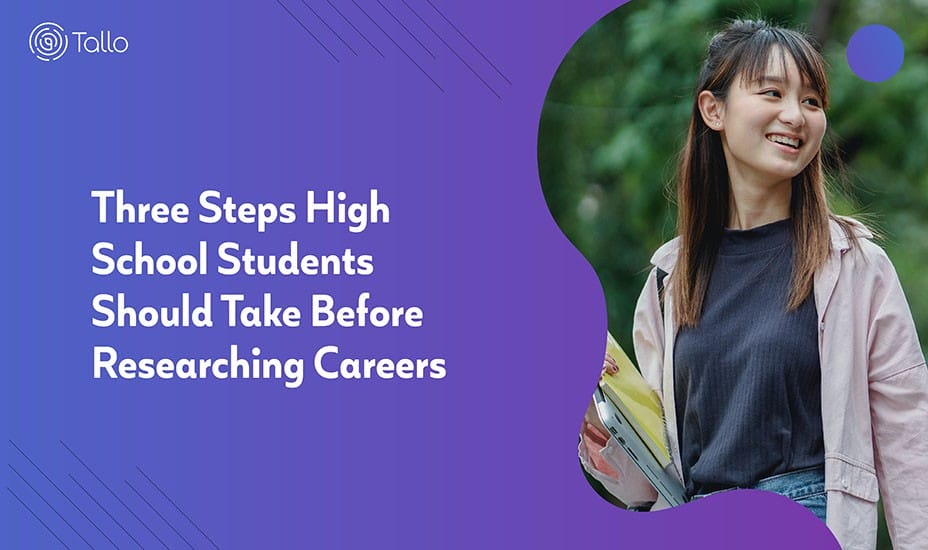
Before researching specific career paths, high school students can benefit from understanding their interests, skills, and available entry-level job opportunities. As a high school student, you can perform self-assessment exercises, shadow someone on the job, and speak with your high school counselor or other professional to find a career path.
Take these 3 steps before researching careers
Are you starting to think about your future career and wondering where to begin? Researching careers early on in high school is a great way to understand your different options and prepare for the necessary education and training as you head toward college or your first post-graduation job.
By taking the following steps, you’ll be better prepared to make decisions about your future and achieve your career goals. So, let’s dive in!
Step 1: Self-Assessment
It is essential for high school students to explore their strengths, values, and goals through self-assessment when conducting career research. By understanding yourself, you’ll be better equipped to identify career opportunities that align with your interests and abilities.
You can use several tools and resources for self-assessment, such as personality tests and interest surveys. These can help you learn your strengths, values, and primary interests to narrow your career options and where you may prefer to work.
Personality tests, such as the Myers-Briggs Type Indicator (MBTI), help with career exploration by letting you understand your personality traits and how they may relate to different entry-level job descriptions. Interest surveys, such as the Holland Code, can help you identify your interests and how they relate to various career fields, such as engineering, nursing, or finance.
Self-assessment is a crucial step in your career research journey. As you learn more about yourself, you can focus on learning about careers that naturally align with your skills and interests to find a good fit for you.

Step 2: Exploration
Exploration is all about gaining firsthand knowledge and understanding of different career fields. There are many ways to explore various careers, such as job shadowing, internships, and informational interviews.
Job shadowing allows you to spend a day with someone in a career that interests you and get a sense of their day-to-day work. It’s a great way to get a feel for the work environment and the skills required for the job.
Internships are an excellent opportunity to gain practical experience in a particular field. They can be paid or unpaid or part-time or full-time. You can find internships through your school or by contacting companies directly.
Informational interviews can be conducted with people currently working in a career that interests you. This is a great way to learn more about the day-to-day responsibilities of the job, the skills and qualifications required, and the potential career path.

Step 3: Planning
Planning is all about taking action and being proactive in pursuing your career goals. This step involves setting specific goals, researching educational and training requirements, and identifying potential obstacles.
To start, set specific, measurable, and achievable career goals for yourself. These goals should align with the career options you’ve identified through your self-assessment and exploration. Then, research the education and training requirements needed to achieve your goals. This may include learning about educational programs or certifications or gathering information about potential apprenticeships or on-the-job training opportunities.
Identifying potential obstacles is also an important part of the planning process. Obstacles to your career goals may include financial resources, lack of experience or qualifications, or other personal or professional responsibilities.
You can view the average education requirements for many jobs through the Bureau of Labor Statistics’ Occupational Outlook Handbook. By identifying potential obstacles in advance, you can develop a plan to overcome them.
Creating a plan will give you a clear roadmap and help you stay focused and motivated as you work toward your career goals. Additionally, it’s important to remember that your plan is not set in stone; you can always adjust it as your interests or circumstances change.
Get More Help With Planning Your Future
Remember that you don’t have to go through career planning alone. You have many resources available, like Tallo, to help you with your career research and planning, even when you’re still in high school.
You can talk to your high school counselor or a career advisor, look into mentorship programs, or seek out professional career coaches. These professionals can provide guidance and support as you navigate the process and help you develop a plan tailored to your unique needs and aspirations..post-thumbnail img {display:none;}








